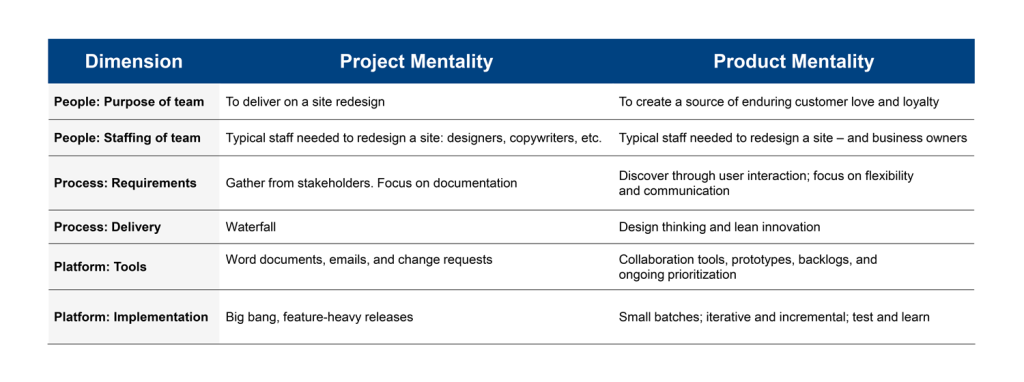Treat Your Website Like a Product, Not a Project

Whenever an executive tells me they want to redesign their company’s website, they typically want to solve these problems:
- The site does not reflect the company’s brand in messaging and/or experience.
- The technology supporting the site has become so obsolete and cumbersome that it makes sense to do a redesign along with an upgrade.
- The site is not performing. Commerce websites are not converting. Brand sites are not achieving engagement.
Meeting those immediate needs is important. But a website redesign is a chance to do something even more impactful. Truly great sites can become platforms for creating enduring, innovative customer experiences in addition to addressing tactical considerations such as how well the site converts. But only those executives who treat their website like a product instead of a project will successfully build a truly customer-centric site that creates lifetime loyalty. When you view your website with a product mindset, your site becomes a focal point for managing your people, processes, and platforms more effectively.
Product versus Project
Having a product mindset affects how you treat your site in a number of ways. For instance:
- You staff the site with a team responsible for formulating new ways to deliver lovable experiences and products to your customers – and they remain dedicated to your site instead of moving on to different roles once your site redesign goes live.
- You use your site as a proving ground for new technologies such as blockchain rather than remain mired in legacy technologies.
- You assess the interrelationship of your site with your people, process, and platforms to avoid unpleasant surprises (such as inadequate funding for innovation) and set yourself up for long-term success.
Here are some of the additional ways a product mentality differs from a project mentality across the dimensions of people, process, and platforms:

The above represent a small sample. In reality, a product owner differs from a project manager in many, many more ways. For example, product owners manage relationships with C-level stakeholders to define an innovation agenda and hold themselves and their teams accountable – which requires leadership skills beyond project management.
Outcomes
If you think of your site as a product not a project, good things happen: first, rallying your company around a customer-centric product that creates long-lasting value. When the site design is done, the product continues to grow. From a practical perspective, with the right attention placed on people, process and platforms, you achieve gains that are bigger than better traffic; you get improvements in time to market and reliable functionality. You don’t run into issues such as adopting the obsolete technologies that might have necessitated the site redesign in the first place. But most importantly, you put your company in a position to build customer centricity through your site.
